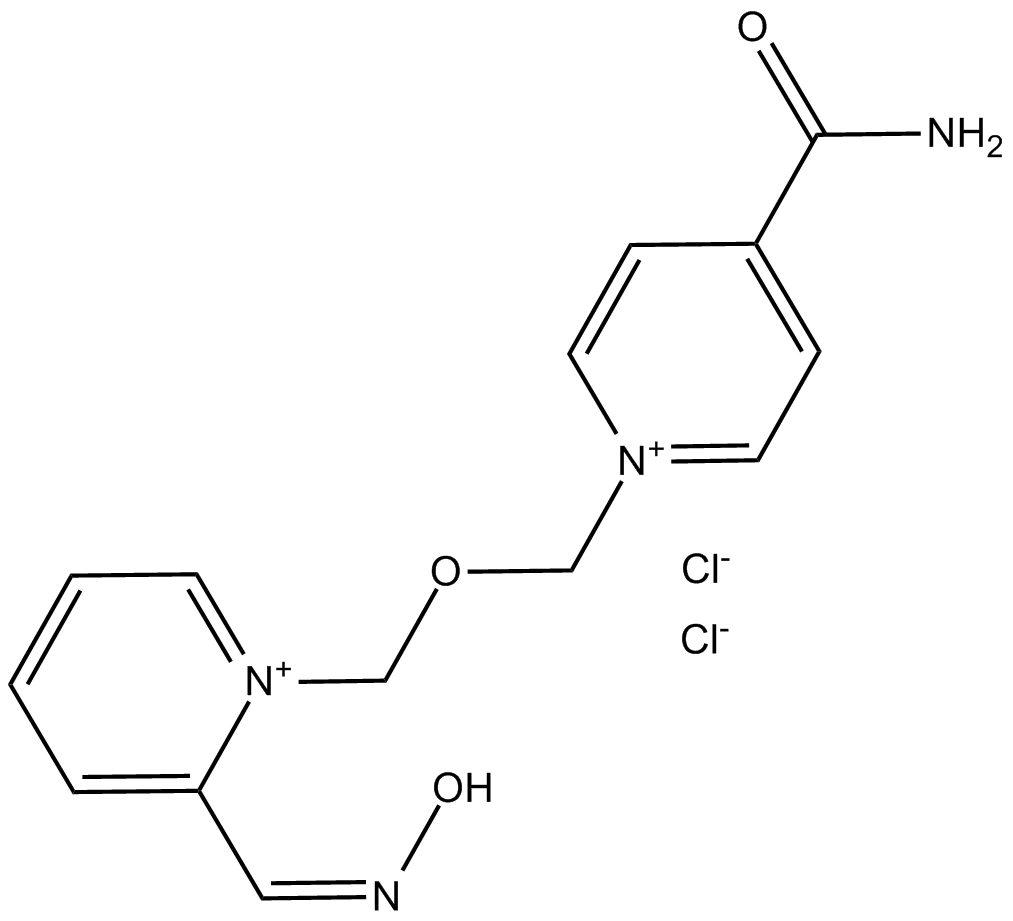Asoxime (chloride) (Synonyms: HI-6) |
| Catalog No.GC15438 |
L'asoxime (chlorure) (HI-6) est un antagoniste des récepteurs de l'acétylcholine (AChR), y compris le récepteur nicotinique, α7 nAChR.
Products are for research use only. Not for human use. We do not sell to patients.

Cas No.: 34433-31-3
Sample solution is provided at 25 µL, 10mM.
IC50: 8.9 μM: blocks AChE in human; 126 μM: inhibits acetylcholinesterase (AChE) in bovine; 160 μM: blocks muscarinic acetylcholine receptor M1, M2, M3 and M4 in mouse.
Asoxime, also known as HI-6, is an asymmetric bis-pyridinium aldoxime and reactivates AChE via nucleophilic attack of oximate anions on organophosphate-AChE conjugates.
AChE, one of the primary targets of organophosphates, is inactivated by organophosphates via reacting covalently with the active center serine, which blocks the hydrolyzation of acetylcholine at peripheral and central synapses. Additionally, the accumulation of acetylcholine leads to an over-stimulation of cholinergic receptors, which disrupts a variety of biological functions.
In vitro: HI-6 showed a bacteriostatic effect on Francisella tularensis (F. tularensis) and inhibited the growth of F. tularensis when treated with 100 mM HI-6 [1].
In vivo: Female BALB/c mice, infected by F. tularensis, were administrated subcutaneously with 100 μl HI-6 for ten days. The lower dose of HI-6 yielded in different symptoms and mortality. Compared to mice injected only with tularemia, groups of mice exposed to the lower dose of HI-6 showed a decline in mortality, which can be explained via higher efficacy of bacteriostatic effect while the toxic effect was decreased [1]. Female Wistar rats were treated intramuscularly with HI-6 at a dose of 15.6 or 156 mg/kg for one day. The level of thiobarbituric acid reactive substances was increased, which was triggered by HI-62 [2].
References:
[1]. Pohanka, M., Pavli, O., Pikula, J., Treml, F., & Kuca, K. Modulation of Tularemia Disease Progress by the Bisquaternary Pyridinium Oxime HI-6. Acta Veterinaria Brno. 2010; 79(3): 443-448.
[2]. Pohanka, M., Sobotka, J., Svobodova, H., & Stetina, R. Sulfur mustard induced oxidative stress and its alteration using asoxime (HI-6). Interdisciplinary Toxicology. 2013; 6(4).
Average Rating: 5 (Based on Reviews and 23 reference(s) in Google Scholar.)
GLPBIO products are for RESEARCH USE ONLY. Please make sure your review or question is research based.
Required fields are marked with *




















